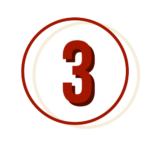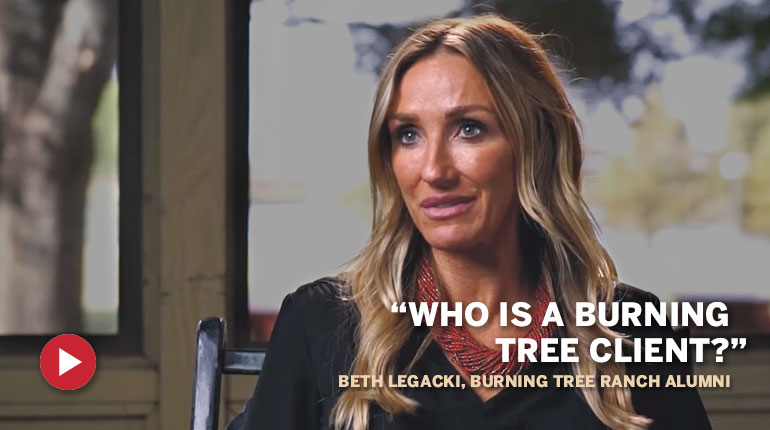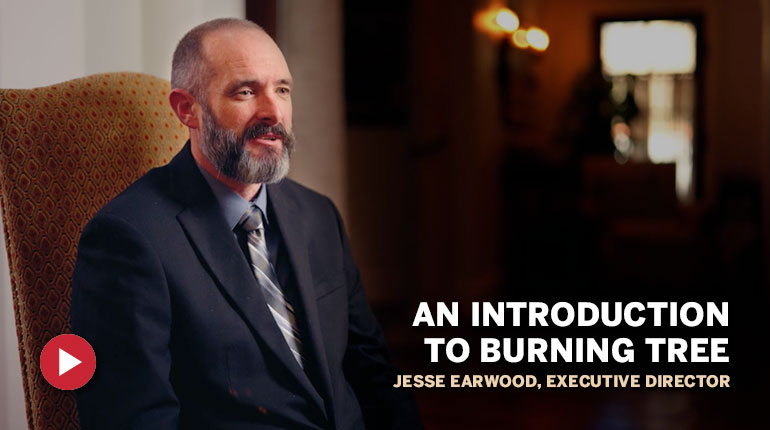Bipolar and Related Disorders in a Dual Diagnosis with Substance Use
Dispelling misconceptions about Bipolar and Related Disorders is crucial for understanding these complex conditions accurately. These disorders are characterized by clinical changes in mood, energy, and behavior, not simply fluctuations everyone experiences.
Bipolar and Related Disorders: A DSM-5 Overview
The DSM-5 categorizes several disorders under the umbrella of Bipolar and Related Disorders, each with distinct characteristics.
Each of these disorders involves significant changes in mood and behavior, ranging from the highs of mania or hypomania to the lows of depression. The accurate diagnosis and differentiation among these disorders are crucial for effective treatment planning, emphasizing the need for a comprehensive evaluation considering the individual’s complete clinical presentation and history.

Bipolar and Related Disorders in the DSM-5
Bipolar I Disorder
Characterized by manic episodes lasting at least 7 days or by manic symptoms so severe that immediate hospital care is needed. Depressive episodes are common, typically lasting at least 2 weeks. This disorder represents a significant mood, energy, and activity fluctuation, impacting daily functioning.
Bipolar II Disorder
Defined by a pattern of depressive episodes and hypomanic episodes, but without the full-blown manic episodes that characterize Bipolar I Disorder. Hypomanic episodes involve elevated mood and increased activity or energy levels lasting at least 4 days, distinct from the individual's normal behavior.
Cyclothymic Disorder (Cyclothymia)
Involves periods of hypomanic symptoms and periods of depressive symptoms lasting for at least 2 years (1 year in children and adolescents), without meeting the criteria for a hypomanic episode or a major depressive episode. This disorder is marked by chronic, fluctuating mood disturbance.
Substance/Medication-Induced Bipolar and Related Disorder
Occurs when an individual experiences significant bipolar symptoms (manic, hypomanic, or depressive) directly attributable to the physiological effects of a substance (e.g., drugs of abuse, medication, toxin exposure).
Bipolar and Related Disorder Due to Another Medical Condition
Represents bipolar symptoms caused directly by another medical condition. Unlike substance-induced bipolar disorder, this category is for conditions where a separate medical illness (e.g., neurological, endocrine) leads to bipolar-like mood changes.
Other Specified Bipolar and Related Disorder
This category is used for situations where an individual exhibits bipolar disorder symptoms that do not meet the full criteria for any of the other bipolar disorders. It allows clinicians to specify the reason the presentation does not meet the requirements for any specific bipolar disorder.
Unspecified Bipolar and Related Disorder
Used when an individual has bipolar disorder symptoms that cause significant impairment in social, occupational, or other important areas of functioning but do not meet the full criteria for any of the bipolar disorders, and the clinician chooses not to specify the reason.
Demystifying Bipolar Disorder: Separating Fact from Fiction
Dispelling misconceptions about Bipolar and Related Disorders is crucial for understanding these complex conditions accurately. Here are several vital points clarifying what Bipolar and Related Disorders are not, aimed at correcting common falsehoods and erroneous information:
- Not Just Mood Swings: Bipolar disorders involve significant mood episodes that are more severe and persistent than typical mood swings. These disorders are characterized by clinical changes in mood, energy, and behavior, not simply fluctuations everyone experiences.
- Not a Personality Flaw: Bipolar and Related Disorders are not a result of personal weakness, lack of willpower, or a flawed character. They are medical conditions linked to genetic, biochemical, and environmental factors.
- Not Caused by a Single Factor: There’s no single cause for Bipolar and Related Disorders. They result from a complex interplay of genetic predisposition and environmental stressors. It’s not simply about being in a challenging situation or having a stressful life.
- Not Exclusive to Adults: While often diagnosed in late adolescence or early adult life, Bipolar Disorder can affect children and older adults. It’s not a condition limited to a specific age group.
- Not Untreatable: Bipolar and Related Disorders are long-term conditions that can be effectively managed with treatment. While there’s no cure, many people with these disorders lead productive and fulfilling lives with the right combination of medication, psychotherapy, and lifestyle adjustments.
- Not Synonymous with Violence: People with Bipolar Disorder are often stigmatized as being dangerous or violent. In reality, they are more likely to be victims of violence than perpetrators. The portrayal of individuals with bipolar disorder as inherently violent is misleading and harmful.
- Not the Same as Depression: Although major depressive episodes are a component of Bipolar I and II Disorders, bipolar disorders include periods of elevated or irritable mood (mania or hypomania) that are not present in depression. This distinction is crucial for appropriate treatment.
- Not a Rare Condition: Bipolar Disorder is relatively common, affecting millions worldwide. It’s not a rare or obscure condition, emphasizing the importance of public awareness and understanding.
By addressing these misconceptions, we can foster a more informed and empathetic approach to Bipolar and Related Disorders, encouraging those affected to seek help and receive the support they need.

Bipolar Disorder and Substance Use: Exploring Correlations
Substance use disorder complicates bipolar disorder due to their intertwined relationship, leading to worsened symptoms, decreased treatment adherence, and poorer overall outcomes. The correlations between the two conditions are significant, with research suggesting high rates of comorbidity. Studies have found that approximately 60% of individuals with bipolar disorder experience a co-occurring substance use disorder at some point in their lives. Additionally, substance use disorder increases the risk of suicide among those with bipolar disorder.
- Alcohol:
- Prevalence: High
- Commonly abused by individuals with bipolar disorder due to its mood-altering effects and accessibility.
- Cocaine:
- Prevalence: Moderate to High
- Stimulant drugs like cocaine are often sought out by individuals with bipolar disorder during manic episodes for their euphoric effects.
- Opioids (e.g., heroin, prescription painkillers):
- Prevalence: Moderate
- Opioid abuse is seen in individuals with bipolar disorder seeking relief from mood swings or pain, often leading to dependence.
- Marijuana:
- Prevalence: Moderate
- Some individuals with bipolar disorder may use marijuana to alleviate symptoms or as a form of self-medication, although the evidence for its effectiveness is mixed.
- Amphetamines:
- Prevalence: Moderate
- Drugs like methamphetamine are sometimes abused by individuals with bipolar disorder, particularly during manic episodes, to enhance mood and energy levels.
- Benzodiazepines (e.g., Xanax, Valium):
- Prevalence: Moderate
- Individuals with bipolar disorder may use these drugs to self-medicate anxiety or insomnia, but they can also lead to dependence and exacerbate mood symptoms.
- Hallucinogens (e.g., LSD, psilocybin mushrooms):
- Prevalence: Low to Moderate
- Less common among individuals with bipolar disorder, but some may use hallucinogens during manic or depressive episodes, leading to unpredictable effects on mood.
- Tobacco/Nicotine:
- Prevalence: High
- Smoking is disproportionately prevalent among individuals with bipolar disorder, possibly due to its calming effects or as a way to alleviate symptoms.
Managing bipolar disorder requires a multifaceted approach tailored to the individual’s needs. Treatment typically involves a combination of medications, psychotherapy, lifestyle changes, and sometimes, hospitalization to manage symptoms effectively.
Navigating Bipolar Disorder: A Guide to Safe and Non-Habit Forming Medications
For managing different forms of bipolar disorder, healthcare providers often prescribe medications aimed at stabilizing mood and preventing the extreme highs (mania or hypomania) and lows (depression) associated with the condition. While the goal is to avoid habit-forming substances, it’s essential to recognize that most medications for bipolar disorder require careful monitoring by a healthcare professional.
Here are some commonly prescribed, non-habit-forming medication classes for bipolar disorder, including both their generic names and brand names where applicable:

Mood Stabilizers
These are the cornerstone of bipolar disorder treatment, helping to control swings between highs and lows.
- Lithium (No specific brand for the mood-stabilizing indication)
- Valproate or Valproic Acid (Brand names: Depakote, Depakene)
- Lamotrigine (Brand name: Lamictal)
- Carbamazepine (Brand names: Tegretol, Carbatrol)

Atypical Antipsychotics
These medications can be effective in treating or preventing manic episodes and, for some, depressive episodes in bipolar disorder.
- Olanzapine (Brand name: Zyprexa)
- Quetiapine (Brand name: Seroquel)
- Risperidone (Brand name: Risperdal)
- Aripiprazole (Brand name: Abilify)
- Ziprasidone (Brand name: Geodon)
- Lurasidone (Brand name: Latuda)

Antidepressant-Antipsychotic
A combination medication that can act as a mood stabilizer and antidepressant.
- Fluoxetine combined with Olanzapine (Brand name: Symbyax)

Calcium Channel Blockers
Though not as commonly used and primarily for heart conditions, some medications have mood-stabilizing effects.
- Verapamil (Brand names: Calan, Verelan) has been studied for its mood-stabilizing properties but is less commonly used for bipolar disorder.
It’s essential for individuals taking these medications to do so under the guidance of a healthcare professional, who can monitor for side effects, effectiveness, and any potential interactions with other medicines. The choice of medication, or combination, depends on the individual’s symptoms, side effects, and overall health. Treatment for bipolar disorder often includes psychotherapy and lifestyle modifications alongside medication to achieve the best outcomes.

Psychotherapy
Psychotherapy, or “talk therapy,” provides support, education, and guidance to people with bipolar disorder and their families. Cognitive-behavioral therapy (CBT), psychoeducation, and family therapy are common forms.

Lifestyle and Home Remedies
- Maintaining a routine
- Monitoring moods
- Staying active and exercising
- Getting plenty of sleep
- Avoiding drugs and alcohol

Coping and Support
Support groups, educational programs, and counseling can provide invaluable support for individuals with bipolar disorder and their families.
Navigating Bipolar Disorder: Helpful Books for Understanding and Coping
Each of these books contributes valuable insights into the nature of Bipolar and Related Disorders, offering hope, understanding, and paths toward healing for those affected.
"An Unquiet Mind: A Memoir of Moods and Madness"
by Kay Redfield Jamison
Renowned psychologist Kay Redfield Jamison shares her journey with bipolar disorder in this memoir. Drawing from her experiences as a patient and a professional, Jamison provides insights into the challenges and triumphs of living with the condition.
"The Bipolar Disorder Survival Guide: What You and Your Family Need to Know"
by David J. Miklowitz
Leading expert David J. Miklowitz writes this comprehensive guide and offers practical advice for managing bipolar disorder. From understanding symptoms to navigating treatment options and coping strategies, this book provides valuable support for individuals and their families.
"Madness: A Bipolar Life"
by Marya Hornbacher
In this memoir, Marya Hornbacher vividly recounts her struggles with bipolar disorder, detailing the highs and lows of living with the condition. Hornbacher's raw and honest portrayal sheds light on the complexities of bipolar disorder and the journey to recovery.
"Bipolar Disorder For Dummies"
by Candida Fink and Joe Kraynak
Aimed at providing accessible information about bipolar disorder, this book covers everything from understanding the diagnosis to managing symptoms and seeking support. Written in a user-friendly format, it is a valuable resource for individuals, families, and caregivers.
"The Bipolar Workbook: Tools for Controlling Your Mood Swings"
by Monica Ramirez Basco
This practical workbook offers evidence-based strategies for managing bipolar disorder and regulating mood swings. Through exercises, worksheets, and self-assessment tools, author Monica Ramirez Basco provides readers with the tools they need to take control of their mental health.
When to Seek Emergency Help
Bipolar disorder is a mental health condition that causes extreme mood swings, including emotional highs (mania or hypomania) and lows (depression). Recognizing the different types of bipolar disorder and understanding when and where to seek emergency help is crucial for those affected by the condition.
It’s critical to seek emergency help if you or someone you know is:
- Thinking about suicide or attempting suicide.
- Making plans to commit suicide.
- Engaging in reckless behavior without safety concerns.
- Experiencing severe psychosis, characterized by delusional thinking or hallucinations.
Who to Contact
In the case of a mental health emergency, consider the following resources:
- National Suicide Prevention Lifeline (USA): 1-800-273-TALK (1-800-273-8255) or visit suicidepreventionlifeline.org for online chat support.
- Crisis Text Line (USA): Text HOME to 741741 to connect with a crisis counselor.
- Emergency Services: Call 911 or your local emergency number immediately if you or someone else is in danger.
- SAMHSA’s National Helpline (USA): 1-800-662-HELP (1-800-662-4357) or visit samhsa.gov for general information on mental health and to find treatment services in your area.
For non-U.S. residents, contact your local mental health services or emergency services number.
Addressing Bipolar & Related Disorders Head-On
Final Words for Families Considering Long-Term Treatment
Understanding bipolar disorder’s complexities is the first step toward effective management and leading a fulfilling life. With appropriate treatment, individuals with bipolar disorder can achieve significant improvement in their symptoms and quality of life.





